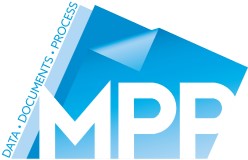Centralised Print: To Centralise or Not to Centralise, that is the question
Of all the cyclical debates (jam or cream first on scones, chicken or egg etc.) the question of whether to centralise or decentralise your print infrastructure seems to come and go with the tides. We are regularly asked what is best and it must be said that industry thinking is that the pendulum has swung back towards decentralisation.
There are undoubtedly pros and cons for both options but the major driver, cost, is starting to pale into insignificance as the price of devices and cost per print, continues to come down.
Old school thinking said that centralised print was the only way forward. The idea being that by reducing the number of devices you save the capital cost and then the ongoing costs associated with running multiple devices. At that same time, this was an industry renowned for bad contracts with high penalties and punitive per print/copy charges and so many manufacturers did nothing to help change direction for this train of thought. Centralised print was also used by some suppliers as a clever way of creating lucrative contracts which included substantial hidden margins.
On top of the cost debate, the technology simply did not exist to connect devices easily or provide intelligent printing and so offices followed a more traditional format – everyone with their own desk, sat in departments etc. – and so there was limited demand for anything different.
Nowadays, many of these arguments have been shelved or overcome and the print industry has had to keep pace with the demand for more flexible working, hot desking, work from home and multi office environments. ‘Follow me’ print and cloud server based print technology now allows users to pick up their print from wherever they are working at that point in time, not always going back to a centralised hub.
Companies have also realised that there must be a balance because an over rationalised environment can have a serious impact on productivity of staff. Users are away from their desks for longer periods of time creating situations whereby phones ring longer, go unanswered and the response to customer demands is slower.
Costs continue to fall and, if you choose your partner carefully, managed print contracts are not as painful as those of the 80s and early 90s. Historically, cheap to buy devices typically had excessive toner and ink consumable costs, with a colour print costing as much as 20p. Recently though, similar desktop devices which are cheap to buy, or rent, have seen the full colour consumable running costs and service support contracts get as low as 2.85ppp, depending on volumes. If you are lucky you may be paying something similar to this already on a per print basis with a mid-high volume centralised device, but you will most likely be paying an expensive quarterly lease rental charge in addition for the device itself.
More importantly these low-cost devices print at speeds of 40-50-60 pages per minute and handle volumes of up to 20,000 prints per month making them great for busy offices. Latest service offerings ensure that if there are any issues with the device not functioning properly, at any point in the contract, it can be swapped out for a direct replacement at no additional cost. So, if a mid-high volume machine does fail there is limited or no impact of productivity for the business.
Like everything in life, we say exercise some moderation and aim for a happy medium, somewhere between plurality and centralised print. An audit of current structure set against a background of desired outcomes can normally find the right balance. Why not contact us today to organise an audit?
